Woodworkers need to have a variety of tools to get the job done. When starting, it can be confusing to figure out what you’ll need.
The best way for newcomers to get started is to acquire the right tools for various tasks. To be time-effective, professionals need to upgrade their tools.
If you have ever been confused about the tools you need for woodworking, this highly informative guide will help you figure out the best electric, pneumatic, and manual tools for your home or workshop.
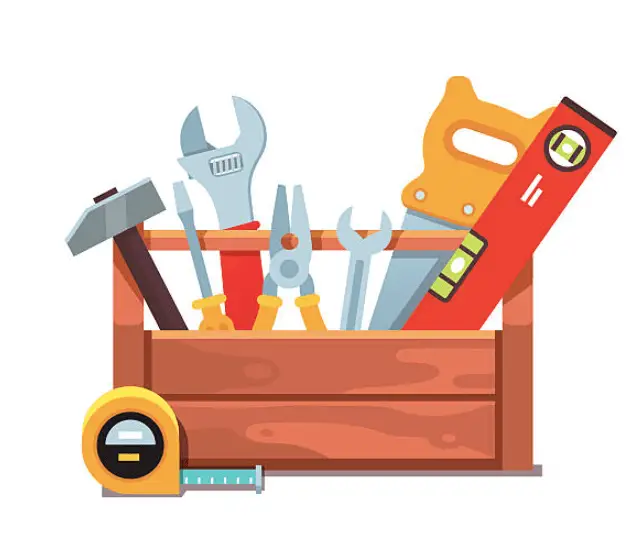
These tools are tried and tested worldwide and have been used by professionals for years. Keep reading!
List of Essential Woodworking Tools (2024)
Here are 25 must-haves for every woodworker.
Best Woodworking Hand Tools
Hand tools are powered manually rather than by an external power source. They are less expensive and more portable when compared with power tools. Some types of woodworking hand tools are:
1. Hand Saws

Hand saws are an essential tool for any woodworker or carpenter and are useful for a wide range of tasks. They are a type of saw that relies on the force of the user to operate- they don’t require electricity, fuel, or batteries. Hand saws are typically held by the handle with one hand and used to manually cut through wood with a back-and-forth motion.
There are many different types of hand saws, each designed for specific tasks. These include crosscut saw, bow saw, fretsaw, veneer saw, and backsaw.
2. Jack Plane
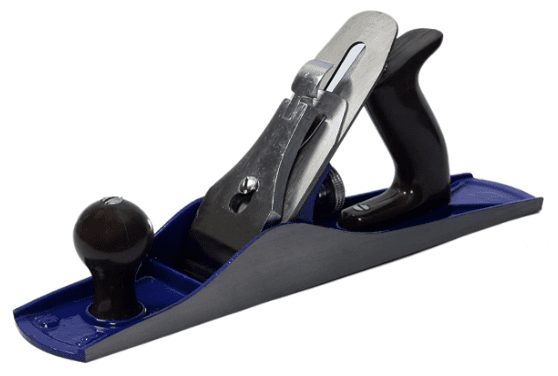
Flattening rough wood is a crucial step in woodworking, and if you’re looking for a reliable tool to do the job, jack planes are a great choice. Jack plane which is also called a foreplane is the only true multifunction hand plane since it can be used for sizing timber, shaping lumber, smoothing, or finishing work. It is the most versatile of all planes and can be used on different wood types.
Jack planes are normally used after the scrub plane and before the smoothing plane.
3. Grooving Plane
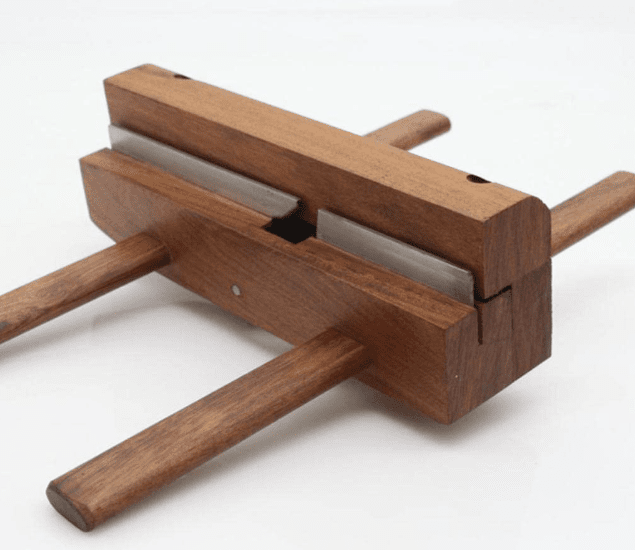
A grooving plane also called the plow plane is a specialized woodworking tool used for creating precise, narrow grooves in the wood. The plane is hand-held and is gently pushed along the wood by the woodworker. It has a blade that can be adjusted to cut a groove of a specific width into the edge or surface of a piece of wood.
Grooving planes are small and portable for easy carrying. They are used for a variety of purposes including creating window sashes, creating channels for wire or cables, drawer bottoms, and preparing wood for tongue and groove joinery.
4. Pincers
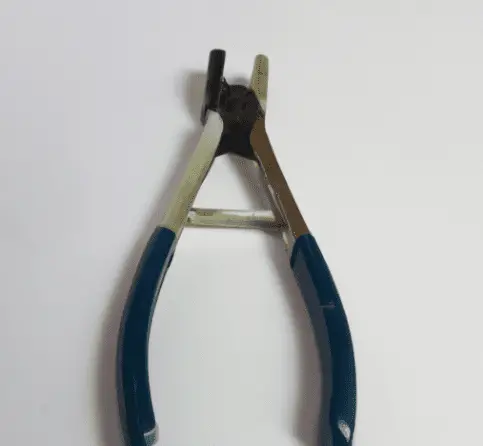
Pincers are levers that often offer a mechanical advantage. They are used to pinch, pull objects, and hold materials securely in place while they are being worked on.
The hand tool consists of two short handles and grasping jaws at one end that grip, hold, or manipulate small objects or materials, such as wires, nails, or small parts. Pincers are made of state-of-the-art steel that comes in a variety of sizes and shapes.
The tool is found in many settings including workshops and automotive garages.
5. Chisels Set
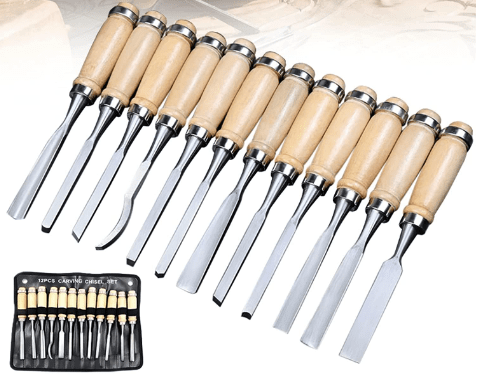
A woodworking chisel is a hand tool used to cut, shape, and remove wood material. It consists of a blade with a sharp edge typically made of metal and a handle. A chisel set has different tool sizes and shapes, each designed for a specific purpose. Common types of chisels that may be included in a set are:
Mortise chisel: Mortise chisels are used for cutting mortises (rectangular or cylindrical holes) in wood.
Bevel-edged chisel: Used for cutting and shaping at an angle or for getting into tight corners. The beveled edge of the chisel is used to cut a dovetail joint.
Skew chisel: A hand tool with an angled blade and two beveled edges.
Corner chisel: A chisel with a curved blade that is used for cutting and shaping corners and tight curves in wood.
6. Claw Hammer
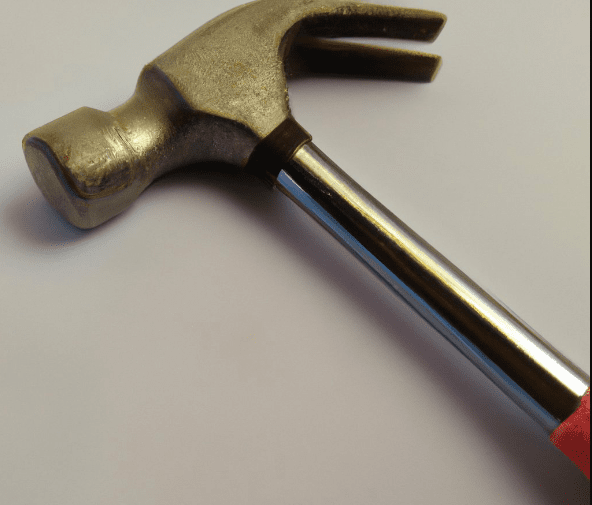
A claw hammer is a type of hammer that has one flat side and one claw-like side. It is used for driving nails into surfaces or extracting them from wood. The head is typically made of metal while the handle is made of wood. Although some models may have handles made of other materials such as steel or fiberglass.
Claw hammers are either the traditional style claw hammer or the framing hammer that is used in framing carpentry.
7. Bradawls
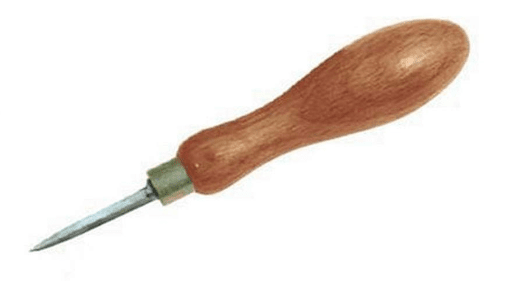
Bradawls are woodworking tools that look like small screwdrivers and can be used to bore holes in wood with ease. A bradawl works by applying force directly to the material you’re boring into and pushing it through the hole you’re trying to make. It has a metal shaft and a plastic or wooden handle. The handle is used to apply pressure to the tool while it is being used.
The tool is great for projects that need pilot holes for nails or screws.
8. Tape Measure

The tape measure which is available in a range of colors is designed to make measuring easier than ever. It is an instrument used to measure lengths and distances as it consists of a flexible string with measurement markings.
It is strong and durable enough to handle the rigors of daily use, yet it’s light enough to carry in your pocket or toolkit. The tape can measure around curves or corners and comes in handy for everyone from carpenters to plumbers. It’s ideal for home handyman projects, professional tradespeople, and DIYers alike.
9. Combination Square
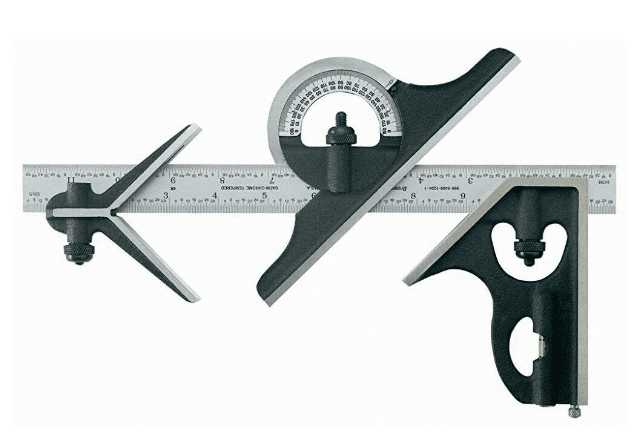
The name given to the tool can vary depending on where you are – it might be called a combo square, a sliding square, or an adjustable square.
A combination square is a tool used to make measurements. It has a rule, which is the main part of the tool, and interchangeable heads that can be fastened to it. The interchangeable heads allow for different kinds of measurements, like basic measurements of angles.
Among the types of head, the square head (which is the most common) is used to mark and measure 45° and 90° angles while a center finder head is used to mark a 45° by bisecting a corner. For marking angles from an edge, you will want to use a protractor head.
10. Marking Gauge
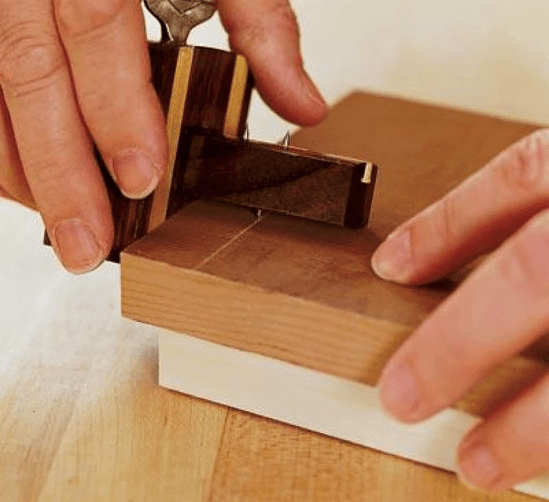
A marking gauge is a simple but useful tool for layout work in woodworking and metalworking. The gauge’s primary function is to create a line parallel to a surface or an edge.
The main body of the gauge is called the stem, it has a pin that goes through one side. You drag the pin on the board to mark a thin line. To lock the fence in position, turn the thumbscrew clockwise until it clicks into place and doesn’t move.
Marking gauges with longer stems are used to work on large work surfaces.
11. Ratchet Brace
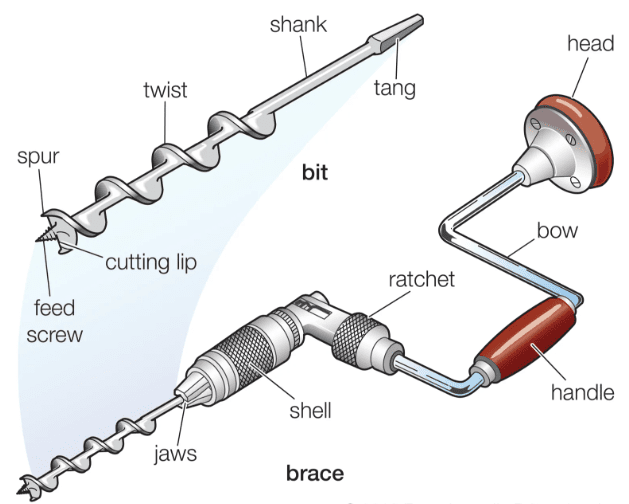
One of the most popular and useful innovations in woodworking is ratchet braces. A ratchet brace is a hand-held power tool used for drilling holes in wood. It consists of a long, crank-shaped handle with a chuck at one end for holding drill bits and a head at the end of the frame for applying pressure to the drill bit. The chuck can be tightened or loosened to secure the drill bit and allow it to be changed as needed.
It is important to select the appropriate drill bit for the material being drilled and to use the ratchet brace with caution to avoid damaging the wood.
12. Marking Knife
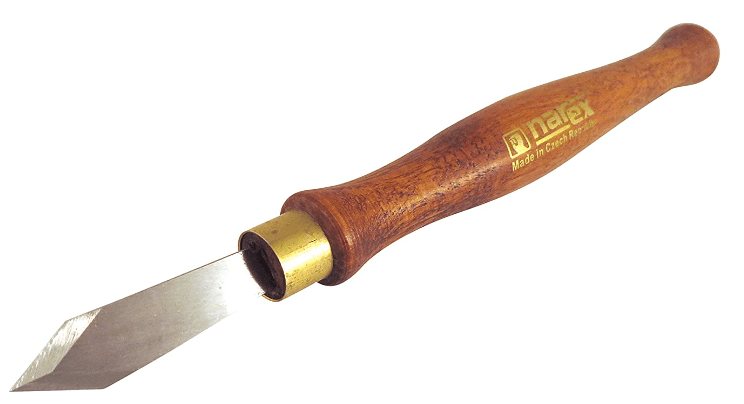
The marking knife is also called the striking knife. It is an essential part of any woodworking tool kit. Marking knives make precise marks on wood without the risk of damaging the wood. They are especially useful for marking lines that will be used as a guide for cutting or shaping wood because they create a clean, straight line.
Marking knives are used to mark straight lines- this can be done using any long and straight object like a ruler as a guide. When the knife is pushed against the straightedge, the blade will leave an impression of the blade on the board or material being marked.
13. Compass / A Pair of Dividers

A compass is used for drafting circles and arcs. It has two points: one point that is placed at the center of the circle to be described, and another point that can be moved along this central point. The points can be opened or closed to change the size of the circle being drawn.
A divider consists of two sharp points connected by a hinge. They can also be used in woodworking to mark out lines and make precise measurements. The sharp points of the divider allow it to scribe a line or mark a point with precision while the hinge allows the user to adjust the distance between the points to the desired measurement.
14. Screwdrivers

A screwdriver is a woodworking tool that tightens or loosens screws. It has a handle and a shaft with a tip that is shaped to fit the head of a screw. The user inserts the tip into the head of the screw, before turning the handle to unscrew it.
There are many types of screwdrivers designed for specific types of screws. The most common type is the flathead screwdriver with slotted notches. Another common type of screwdriver has a tip that is shaped like a plus sign (+). It is called a Phillips head (PH) screwdriver and is used to turn screws with a matching plus-shaped head.
15. Trammel
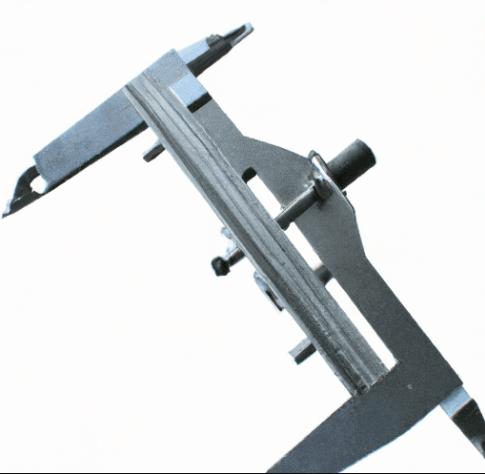
Trammels are tools that consist of two points used for tasks like marking lines, drawing arcs and circles, and measuring distances.
The difference between a trammel and a pair of dividers is that a trammel has a long handle and is used to measure relatively long distances, while a pair of dividers has two short handles and is used to measure relatively short distances.
If you want to measure the distance between two points that are too far to be reached with a divider, a trammel is your best bet.
Best Woodworking Power Tools
Power tools are mechanical devices that use an external power source such as electricity to do tasks that would be difficult or impossible to do by hand tools.
They are designed to make tasks easier, faster, and more efficient, and are commonly used in various industries. Woodworkers use power tools like:
16. Circular Saw

A circular saw uses a toothed disc to cut different types of materials by spinning. It uses a rotating, circular blade to make cuts in wood.
There are different types of circular saw blades, each meant for specific applications. Some of them are ripping blades, crosscutting blades, dado blades, plywood blades, general-purpose blades, and finishing blades.
The blade of a circular saw is slipped onto the saw’s arbor ensuring the teeth face the direction of rotation.
17. Electric Planer
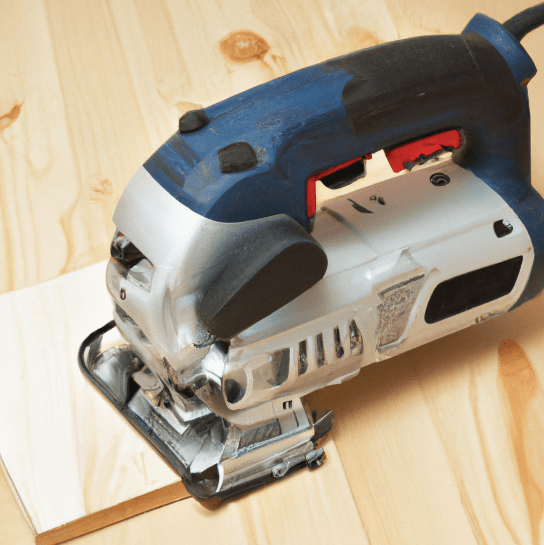
An electric planer combines the functionality of a belt sander, jointer, and hand plane – the perfect power tool to have in your workshop. Electric planers are used by woodworkers and carpenters to prepare wood for further processing or to smooth out rough or uneven surfaces. The blade is used to shave off thin layers of wood from the surface of a board, allowing you to achieve a level surface.
Electric planers are typically more powerful and efficient than hand planes, and they are easy to use and maintain.
When working with wood, follow the grain; this will ensure that it doesn’t become damaged or splinter easily during sanding.
18. Router
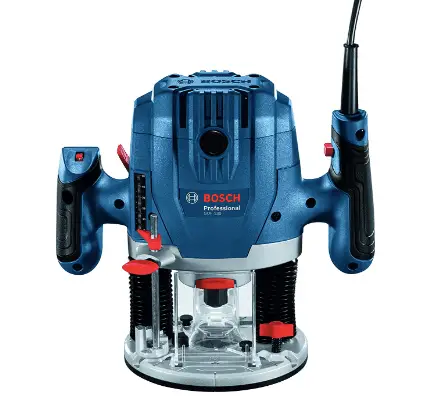
A woodworking router is a cutting tool that has a rotating blade used to create precise shapes, profiles, and edges on wood or other materials. The cutter of a router is mounted on a spindle that is powered by a pneumatic or an electric motor, and the bits can be changed out to get more elaborate patterns.
Routers are commonly used in woodworking, carpentry, and other industries to make a variety of cuts, including straight cuts and edge profiles.
19. Sander
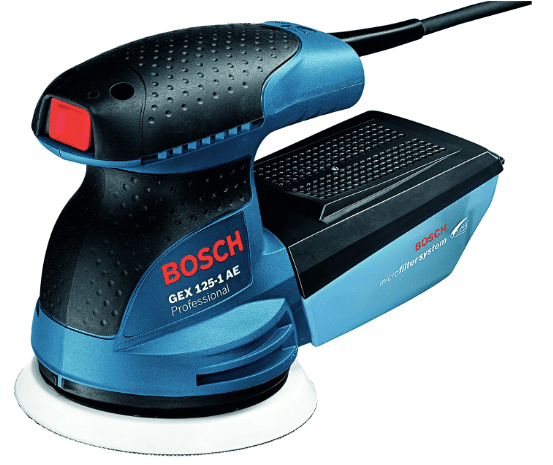
A sander is a tool used to grind down rough surfaces with sandpaper. It is used to smooth and finish surfaces by abrading them. There are several types of sanders, including random orbital sanders, belt sanders, disc sanders, and rotary sanders.
With its variable speed, the power sander can be used to smooth or rough surfaces to provide a more desired finish. Additionally, woodworkers use the tool to roughen boards and get them ready for finishing.
To use a sander, pick the best sandpaper grit for your project, insert the sandpaper, place it on the surface that you want to smooth out, and start rubbing away!
20. Jigsaw
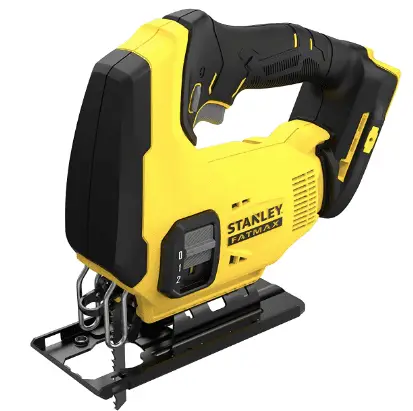
A jigsaw cuts irregular curves and designs like stenciling. It has an electric motor and a reciprocating saw blade that alternates between cutting and pulling back on the material to make shapes that are difficult to cut using other saws.
Jigsaws cut other materials like drywall, steel, and fiberglass when used with the correct blade. They can also be helpful when making bevel cuts as they can be angled to 45°.
No matter your woodworking experience level, the power tool is easy to use. All you need to do is put in the blade, plug in the jigsaw if it is a corded tool, or insert the battery if it is battery-operated and then turn on the tool.
21. Power Drill
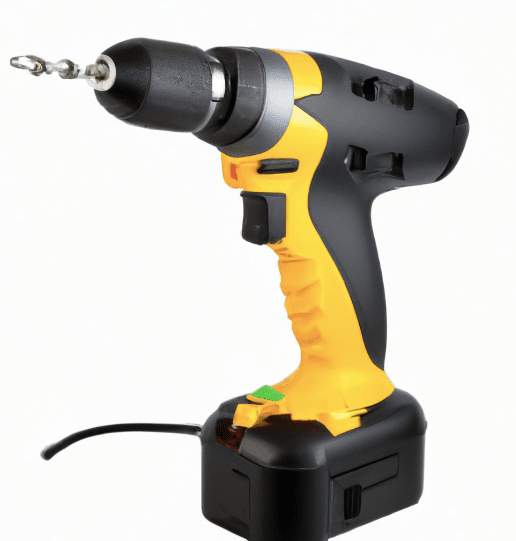
A power drill is a hand tool that allows you to drill round-shaped holes quickly. It is a portable, electric-powered machine that is used to drive drill bits into various surfaces. A power drill has several parts, but the key ones are the handle used for holding and carrying the drill, the on/off switch with a safety latch, a reverse switch, the torque adjustment, and the chuck. The ease of use is made possible by an electric motor that rotates the chuck.
Power drills are used to make holes in hard materials like walls, floors, and ceilings for pipes, wires, or plumbing fixtures.
22. Band Saw
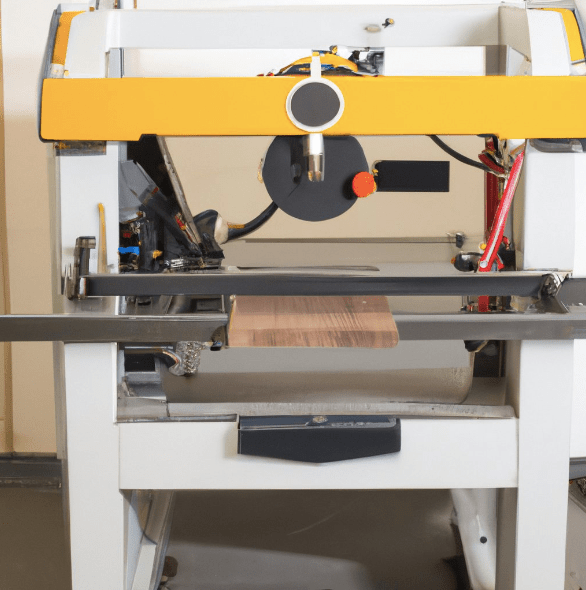
Band saws are power saws with a solid band of toothed metal running through two wheels to cut material. They are usually used in the metalworking, lumbering, and woodworking industry. Their versatility makes them a favorite among professionals and hobbyists alike.
Because of their long, continuous blade and adjustable guide, band saws can make precise cuts with minimal deviation from the intended line. Woodworkers use the tool to split boards into two halves, cut notches and joints, cut curved surfaces, and cut thick planes.
Band saws are generally considered to be safer than other types of woodworking machinery because the blade cuts downward and the material is held securely in place while being cut.
23. Table Saw
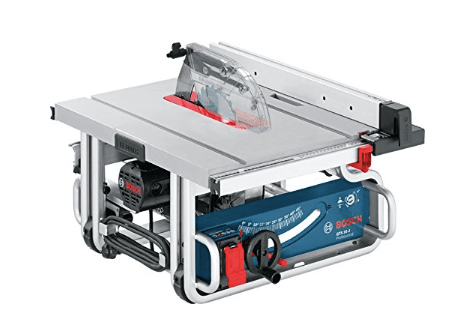
Table saws are one of the most vital tools in your woodworking arsenal. A table saw can be used for so many different tasks. It can be used for crosscutting as well as ripping wood as its blade cuts through wood with ease. There is really no limit to what you can construct with this power tool.
Table saws can be very powerful and dangerous if not used properly. It is important to use a table saw safely, following all manufacturer’s instructions and taking proper precautions, such as wearing eye protection and choosing appropriate footwear.
24. Jointer

A jointer is a woodworking machine that is used to straighten or flatten the face or edges of wood boards. It is typically used in conjunction with a planer to prepare rough lumber for use in projects.
If you’re planning on constructing furniture it makes sense to first buy a jointer. In contrast to a planer, it’s designed to flatten uneven surfaces and remove tough warps, humps, and twists. On the other hand, an electric planer is more suited to producing a flat surface with an even thickness.
A woodworking jointer has four major parts. These include a cutter head, an infeed table, an outfeed table, and a fence.
25. Wood Lathe
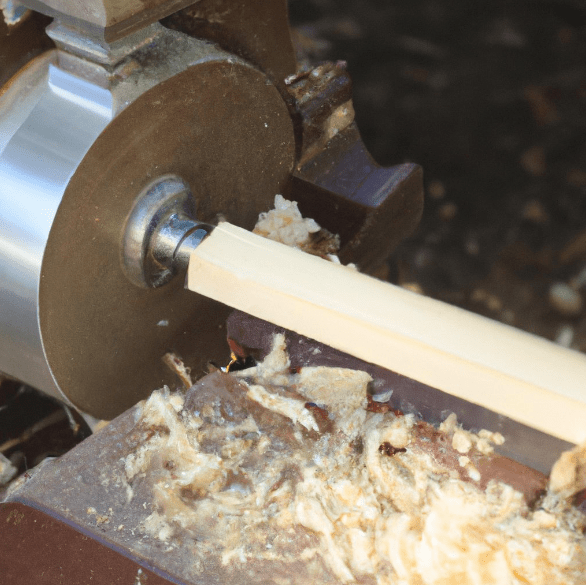
A lathe is a machine used to shape and smooth wood into cylindrical profiles by rotating the wood. Its motor cuts through wood at a high speed. The machine comes with different parts like a bed which is the main frame of the lathe, an adjustable tailstock, tool rest, spindle, headstock, and an electric motor that powers the wood lathe.
Woodworkers and other craftsmen use lathes to make several items like bowls, vases, furniture legs, and other objects. Lathes are usually less noisy than other power tools or machines.
Frequently Asked Questions
Conclusion
There are so many tools and techniques to use in woodworking, not to mention the wide range of materials used in the craft. The good news is that you don’t have to have every tool out there to excel at woodworking. These 25 essential woodworking tools are all that you will need to start out!
